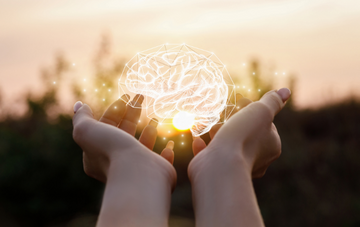
Neuroplasticity: Brain Training of the Best Kind
Neuroplasticity is not a term that many of us encounter in our day to day lives. However, it may be the key to revolutionising our mindsets. We all know that with exercise, we can completely transform the composition of our bodies. Many people, however, are unaware of their ability to transform their brains. Not only can we change the structure and function, but we can also ‘re-wire’ it so to speak. This means making small changes so that we become happier, mentally healthier and are more readily able to express love.
When we have children, we nurture them from a small age. We reward them for positive behaviours and reinforce their best traits. We praise them for their acts of kindness and generosity. Reassure them when they are being too hard on themselves. This begs the question ‘Why can’t we replicate this form of brain training on ourselves, as adults as part of our personal development?
What is Neuroplasticity?
The concept that I’m talking about is called “self-directed neuroplasticity” and it was derived from the researcher Dr Jeffrey M. Schwartz in his book, “The Mind & The Brain” (Neuroplasticity and the Power of Mental Force). Dr Schwartz puts forth a compelling argument; You are not at the mercy of genetically-predetermined brain activity. You are in the driving seat and play a decisive role in your brain’s structure and function through your decisions. Where do you focus your time and energy?
We can break the term Neuroplasticity down into two sections. ‘Neuro’ means nerve and ‘Plasticity’ refers to something that is changeable or malleable. Your brain has the capability to change its internal shape, connections and functions in response to certain variables, through Neuroplasticity. This means, thinking, emotions, behaviour, as well as injury.
How can it benefit me?
So the next question I think we must tackle is what to do with this information. Self-directed neuroplasticity is a tool that we can use to consciously control how we want our brains to work! For example, if you want to increase your ability to feel and express happiness, you might start a gratitude journal. The direct consequences of this are that you ‘force’ your brain to behave in a certain way. In this particular example, your brain adapts to experience and express a sense of gratitude more often and more readily. Similarly, anytime you learn a new skill, your brain structure and function adapts to whatever you challenge it with.
Five steps to self-directed Neuroplasticity:
The baby steps of awareness: There may be a catalogue of things that you’re unhappy about and would like to change. These things take time, so try not to rush. Choose to tackle one thing at a time.
Attention: Focus all of your attention on implementing a healthy thought and behavioural pattern. Whatever you focus your attention on will become your reality. If you choose to concentrate on gratitude, this attention magnifies your happiness.
Just do it: Be consistent and engage your new neural pathways for at least 15 minutes when unwanted thoughts occur. This shifts your focus away from the bad, and onto the good, leading to permanent brain changes over time.
The beauty of the changing brain: Over time, and with consistent focused effort, your brain changes become more solidified. However, there is one caveat: use it or lose it! Your brain is constantly changing, so remember to keep ‘feeding’ it with the positive changes that you desire. Buddhist monks who practise mindfulness or forms of meditation involving compassion rarely experience depression. The brain of a monk then becomes their brains become “wired” to preferentially express positive emotions.
Ultimately, it is pretty simple to ‘Grow your own brain!’ It all boils down to understanding what you want and then implementing changes to help you get it. Keeping a gratitude journal is one of the most effective (and scientifically proven) methods of helping to reinforce positivity. And lastly, I strongly recommend learning loving-kindness “Metta” meditation – another extremely powerful positive brain changer that I will go into more detail about in the future!
For more exclusive advice, visit my website, or reach out on one of my platforms. I adore hearing from you.
All my love,
Jayney
Tags: brain, brain activity, brain training, Neuroplasticity, positive reinforcements, positivity



Jayney this is really interesting and something I will try . Love your articles .
For many years I assumed the way we think was fixed and it is absolutely revolutionary to find out over the past few years that it isn’t. Thank you for your practical tips and on how to continue the process of changing the way I think.